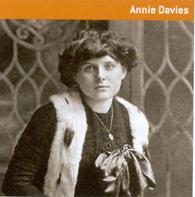About the hymns used in BEND US

- It is a near-even mix of historically accurate hymns, mostly sung a capella, and contemporary compositions sung with an accompaniment track.
- The first act contains mostly solos, one duet and one trio; the second act has several ensemble numbers.
- The music is used primarily for emotional impact rather than to move the story along.
- The scene in Act 2 called “Transformations” is entirely underscored, is 17 minutes long, and employs 45 light cues! About a dozen different hymn tunes are played or sung during the scene, which shifts from chapel singing, to newspaper reporter Awstin interviewing individuals about the revival, to scenes featuring an increasingly angry and critical Rev. Peter Price.
Here is a list of the hymns you will hear during the play:
“The Crowning Song”
“Throw Out the Lifeline”
“Diolch Iddo”
“I Need Thee Ev’ry Hour”
“Here is Love” (tune: Britain’s Lament)
“Here’s a Savior for the Lost Ones”
“Great God of Wonders”
“Onward March, Heavenly Jesus”
“Tell Mother I’ll Be There”
“Come to Jesus Just Now”
“Here is Love” (tune: Ebenezer)
“The Miner’s Hymn” (tune: Bleinhafren)
This last has a fascinating story behind its writing, which you can read all about at our friend Well-Digger’s blog. Click on “The Miner’s Hymn” above to connect to that fascinating post. Some of the most salient points I learned from it are: the lyric writer, Dafydd William, lived in a marshy area near the Loughor River,where he probably wrote the hymn, in the mid 1700s. (In the play, the hymn is sung in a mine in the town of Loughor.) Several English translations were made beginning in the mid to late 1800s. It became associated with miners after a terrible coal mine flood in the 1870s, when a group of trapped miners sang it while watching the flood waters rise around them. It has been associated with a number of hymn tunes, including Ebenezer and Alexander.

